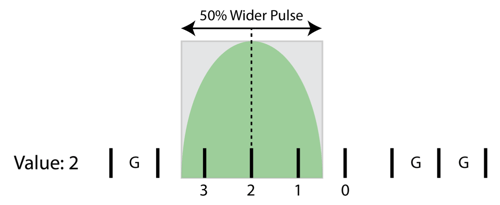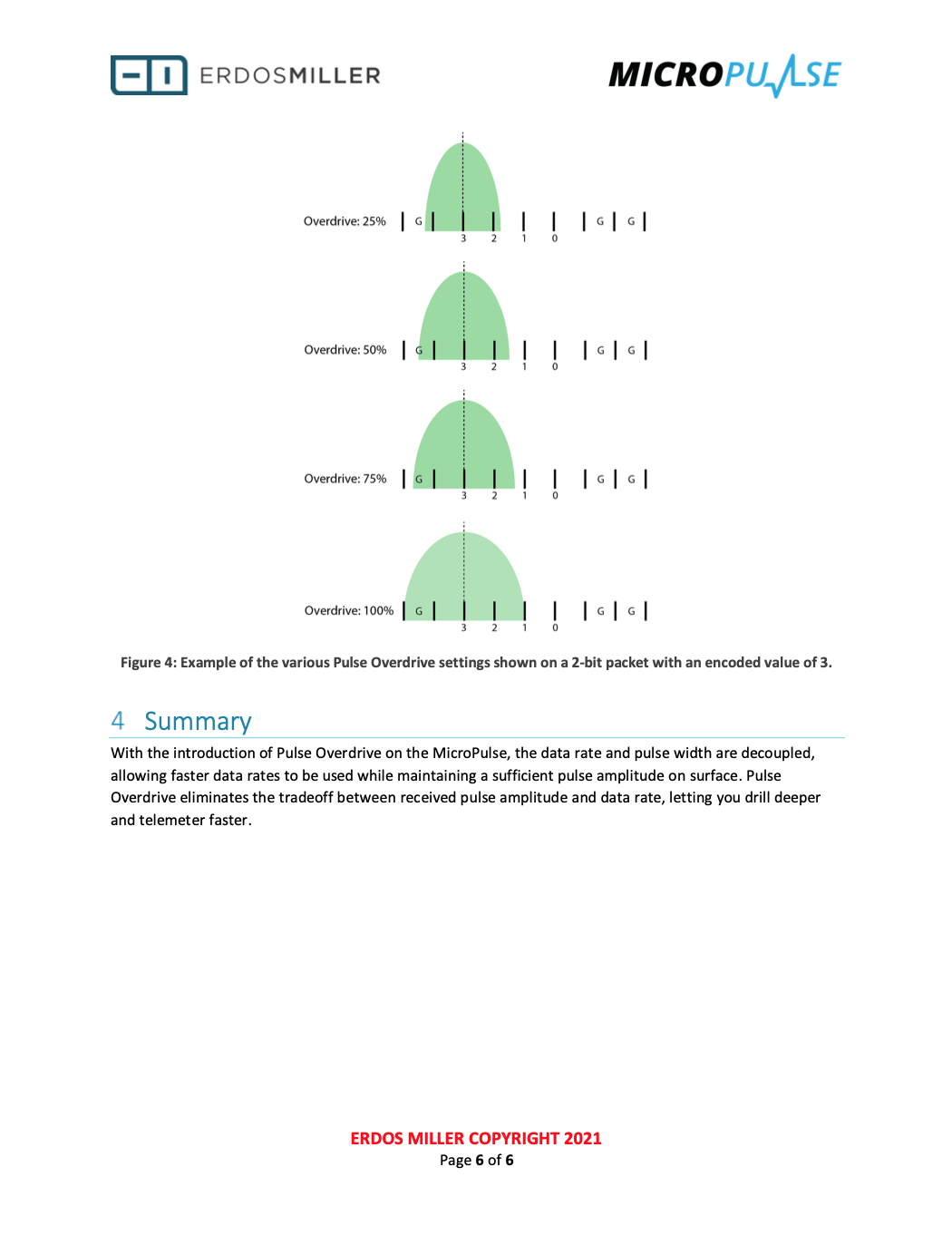Traditionally pulse width and data rate have been directly coupled in MWD telemetry. Changing the pulse width directly and proportionally changes the data rate of telemetry to surface. With the introduction of Pulse Overdrive feature on MicroPulse (Patent Pending) the pulse width and telemetry data rate become decoupled, allowing for a faster data rate while maintaining a wider pulse width.
The pulser in a positive pulse MWD system is an electronically controlled hydraulic valve, and the longer the valve stays closed, the larger the pressure differential across the valve (to a point). Therefore, a longer pulse width is generally also a larger received pulse amplitude at surface. Pulse Overdrive decouples this relationship by allowing a wider pulse to be used for a given data rate.
The image below respresents a standard 2-bit M-ary packet with an encoded value of 2. The gray box represents the pulse commanded by the MicroPulse to the pulser and the blue pulse represents the approximate pulse shape received on surface. The G’s represent the guard slots in the M-ary telemetry protocol.

Now, the image below represents a 2-bit M-ary packet with 50% Pulse Overdrive with an encoded value of 2, the total length of the 2-bit M-ary packet remains the same as without Pulse Overdrive enabled, and the pulse is centered in the same time slot as without Pulse Overdrive. The gray box represents the pulse commanded by the MicroPulse to the pulser and the green pulse represents the approximate pulse shape received on surface. The G’s represent the guard slots in the M-ary telemetry protocol.






